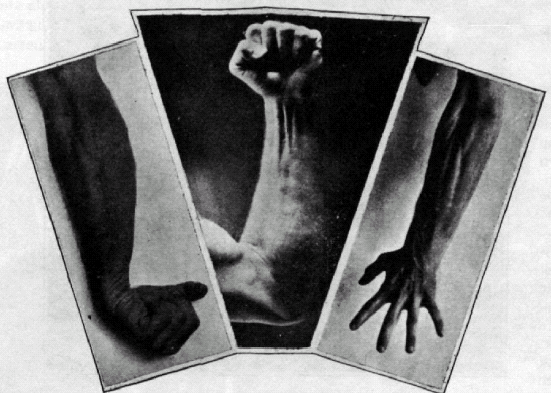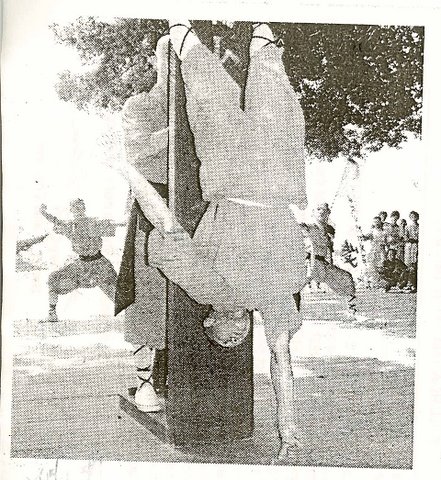First off thanks to everyone who took the time to fill out the short survey. I appreciate you spending your time to help me out even it its just a couple minutes. I’ll be sharing what everyone said a little later on but today I thought I’d tackle a couple questions.
But before that a few other updates. That last blog post on the planche brought a couple great comments. I’ll delve further into that subject soon (with a few more pictures). In fact, there’s been a few comments on several different blog posts which I’m pleased with. Keep the conversation going.
And recently, I was notified that the company that makes the Elite Rings and Ring Strength DVD has switched over to fre e shipping within the USA. And I’m passing that offer on to you.
So if you are in the US you can get these products even cheaper now!
Now onto the questions. It’s a long one but worth reading.
“I’ve been practicing (more or less playing with) handstands and handbalancing for about a year. I taught myself 100% and so I’ve adopted ALOT of bad habits. I can walk yards forward or backwards on my hands, I’ve held a handstand for 42 seconds once, and I’ve even been expirimenting with walking up and down stairs with some mild success.
“Unfortunately, despite the impressive feets that I can achieve I get criticized frequently on my form. My back has a huge arch and I let my legs dangle over my head. It works for me, but just doesn’t have that impressive look to it. I’m sure it’s not hard to teach someone to keep their legs together and toes pointed, but after a year of success it’s a little bit harder to break the habit. Plus I get frustrated easier because I think ”I can just do it better my way anyway.” So as you may have already guessed, because I usually let my legs dangle, when I try to pick them up I underbalance. It’s like trying to learn it all over again and It’s quite frustrating. If you have any tips on gradually recovering from this habit as opposed to just relearning it I would appreciate your advice. And is it suppose to be harder or easier with you legs together?
“A second question I have is a specific skill question. I can walk in a circle on my hands, but I can’t stay in one place and pivot around. It would be a cool tutorial for you to make if you can teach how to pivot on your hands. Or if you could just point me in the right direction that would be cool too.”
Thank you for your time,
Josh Reed
Thank you for taking the time to write a detailed question. Much easier to answer this when there’s lots to draw from.
About the form and how to correct it. First let me start by saying why some people go towards the feet hanging form. Because of the bend at the knees the lower legs are hanging down and this effectively lowers your center of gravity. Also like you mentioned it throws your weight a bit more forward toward an overbalance.
If its easier why is it not generally recommended? The key word is the legs were ‘dangling’ over the head. In this position it is harder to keep the legs under control, and without control hand balancing becomes much harder. You want the legs together and straight so that they act like one object, which is easy to control.
It may be a bit harder in the beginning but in the long run it’ll make more advanced stunts (and doing simpler ones for longer) that much easier.
This is a case of taking two steps back so you can move three steps forward. Yes, you’ll have to go back to re-learn the move in a sense. Going back to the wall will help.
But the best thing I think would be to learn how to move from one position to the other. Learn to stay in a stationary handstand. Raise and bring the feet together from your hanging, knees bent position, then go back and forth. Raising and lowering them under control.
Your handstand position isn’t wrong (even if others say its ugly). You should be able to assume any position you want. Learn to control your legs and make them do what they want.
Which brings me to the next question regarding doing pirouettes. Turning around in one spot is much harder than just walking forwards.
I’ll likely do a longer tutorial later on but for now just a couple tips. Start off with small steps and gradually reduce the number you use over time. Eventually it should only take two steps to turn around, but start with up to six if you need to.
Also pay attention to the feet. Its common just to focus on the hands as you do the move but giving mind to the furthest point from your balance will help you even more to stay up. And this goes for all walking and even standing still.
“I have subscribed to your Updater and it seems like Every time I learn of something new from a friend or somewhere on the internet I come to my e-mail to find you have already e-mailed me with a new set of tips or instructions JUST ON THE VERY THING! This is far from a question but I wanted to let you know you personally inspired me to continue my journey to become stronger and more powerful then I ever thought possible.”
Balancing diligently
~Matt
Thanks a lot Matt. I am happy to inspire and teach. And that’s going to wrap it up for today.
Good Luck and Good Hand Balancing,
Logan Christopher










